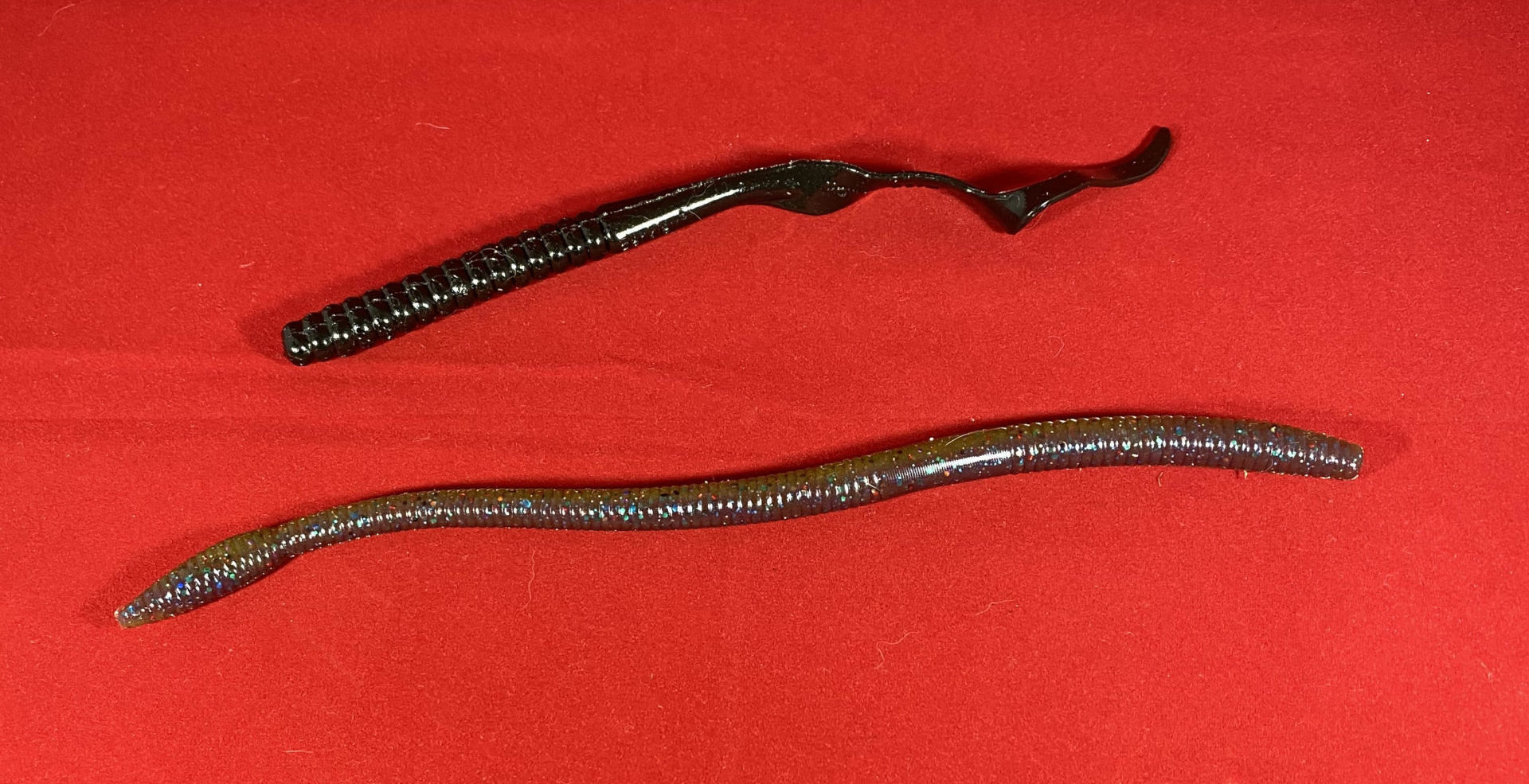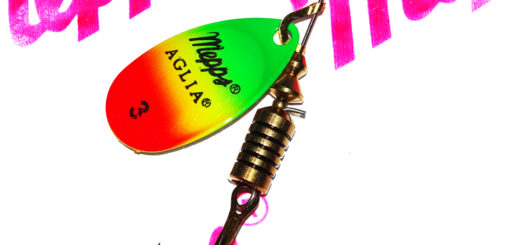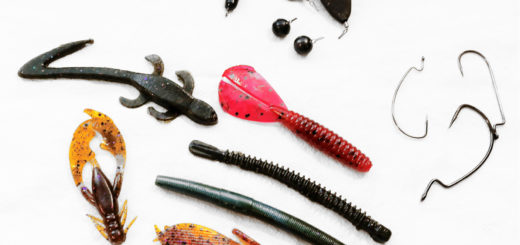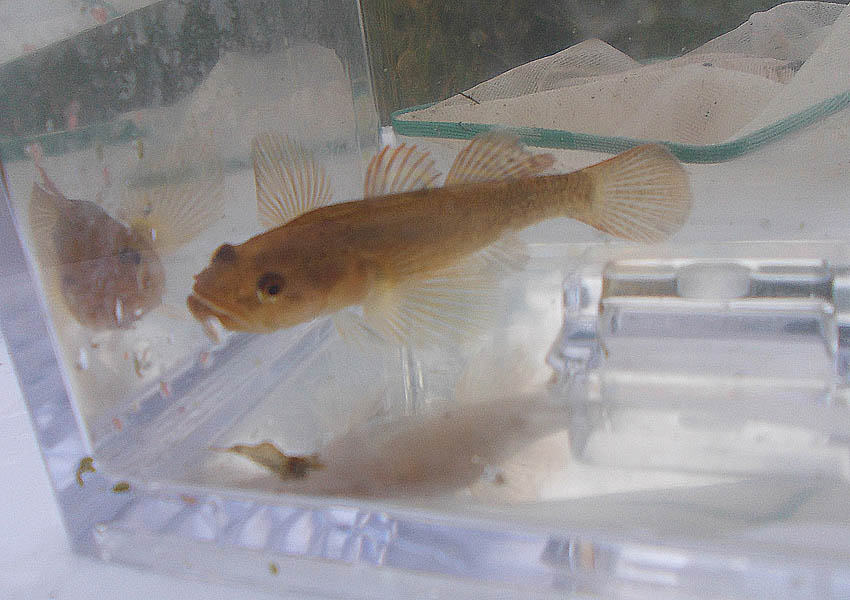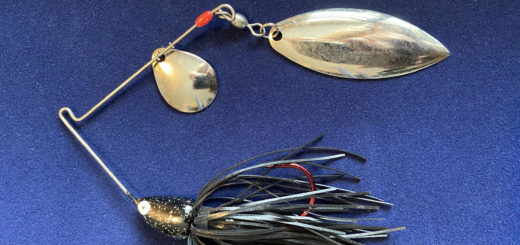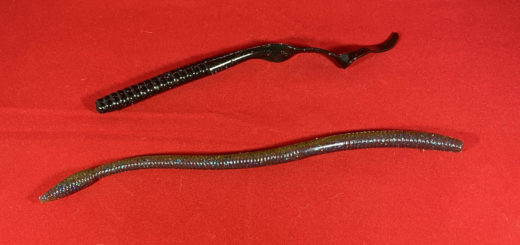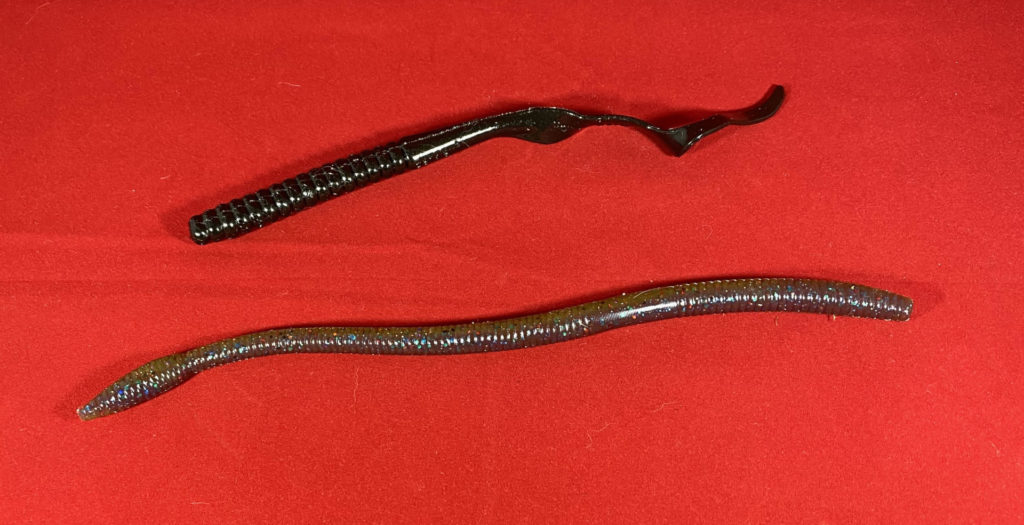
The heat of summer is a great time to fish a 10 inch worm. Big worms provide a big meal for both big and small largemouth when the water heats up. The metabolism of a bass is high when the water temperatures start to heat up. Those fish are looking for a big meal to fill them up. That is what makes a 10 inch or 12 inch worm a great choice to have in any tackle box.
Big worms are very versatile, and can be fished in a variety of ways in a variety of places. While it is true for the most part that big baits catch big fish, anglers will find even fish smaller than the worm itself impaled with the hook from time to time. For the most part, though, the smaller guys are weeded out and the “big dogs” come out to play.
Many anglers swim a big worm, just fast enough for the tail to twirl its way through the water. Using a smaller weight, anything from a 1/8 to 3/16 is usually all that is needed. When casting a worm, use a offset worm hook rather than an extra wide gap hook. The larger, beefier hooks will not make the worm look right coming through the water.
Cast the worm out and reel it back over the top of vegetation, just ticking the top of the weeds. Keep an eye on the line. There will often not be big strikes. It may be that the line simply starts off in the wrong direction as a big bass picks it up and swims off with it. As the saying goes, “hooksets are fee,” so do not be afraid to set the hook at the sign of anything strange happening with the line or at the feel of the slightest bump. Also, after reeling down and setting the hook, do not be afraid to set the hook again after taking a few cranks. This will help to ensure the hook penetrates the fish’s mouth and he will stay hooked up, even if he tries to dive back down into the weeds.
Another way to fish a big worm is basically the same way an angler would fish any Texas-rigged soft plastic. Hopping it off the bottom, an angler can cover as much water as they can with a search bait, making it a great choice for any summer situation. Fish deep weed edges and brush piles this way, with various weights.
This may take some experimenting, but by and large, use heavier weights in clearer water. Up to a 3/8 ounce is good for this application. A slower rate of fall can be better in dark or stained water, with 3/16 – ¼ ounce being popular weights. The fish will see a large bait like this from a long distance, but the idea is to not let it get a good look at it. Faster fall rates in clearer water will bring more strikes.
When Texas rigging a bait, as an angler would with a 10 inch worm, most anglers would agree it should be pegged when fishing heavy cover. In other instances, however, there is some dissention in the ranks. Professional anglers like Larry Nixon warn against pegging a sinker at all unless in heavy cover. He feels, perhaps rightly so, that it gives the chance the fish’s mouth will wind up on the sinker, rather than the bait. The hook set, then, simply pulls the bait out of the fish’s mouth. Also, when a sinker is not pegged, it will hit the bottom about 8 inches in front of the bait, depending on the size of the weight. That allows the bait to float off the bottom for a bit of time, sometimes drawing a strike that a pegged weight would not.
Fishing a big worm can be done from 1-50 feet, depending on the waterbody. At times, a good idea is to keep the boat in 20 feet of water and cast to the inside weedline, ticking the weeds on the retrieve. Other times, working almost vertically over a deep brush pile is ideal. When attempting to find a pattern, anglers should consider water temperature. Cooler water will have more dissolved oxygen, and fish will be more comfortable, and more active, at those depths. In the cool of the early morning and late evening, though, those same fish may some shallow to feed in cooler water temperatures.
In the heat of summer, when fishing weeds or deeper brush piles, a big worm is always a great choice. For colors, “keep it simple” is always the best motto. Black and June bug or purple seem to produce very well. Green pumpkin, of course, is always an option in any soft plastic bait. The action of a large ribbon tail worm will bring fish out of the deepest weeds and through the ugliest of brush piles. Be sure to watch the line, however, as these big baits often provoke a very slight bite.
